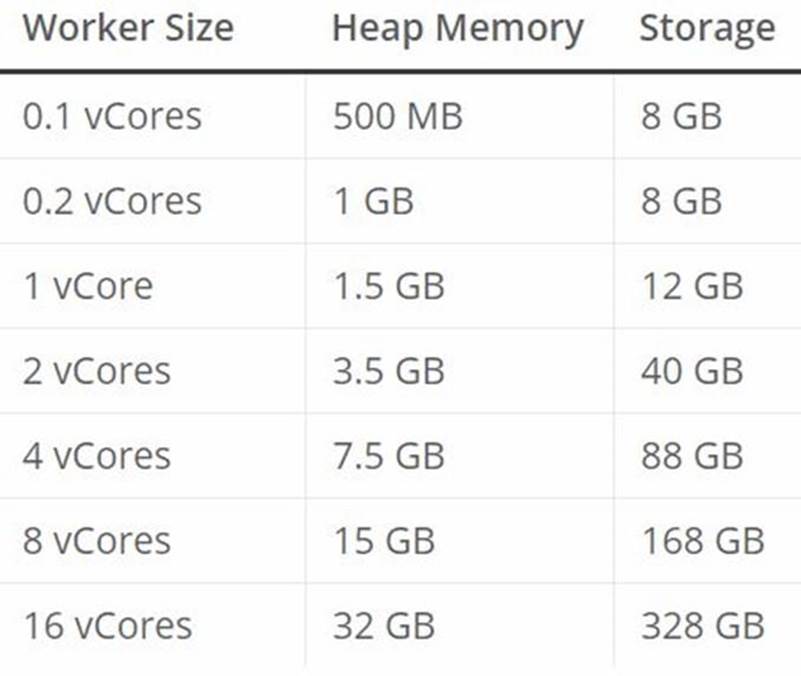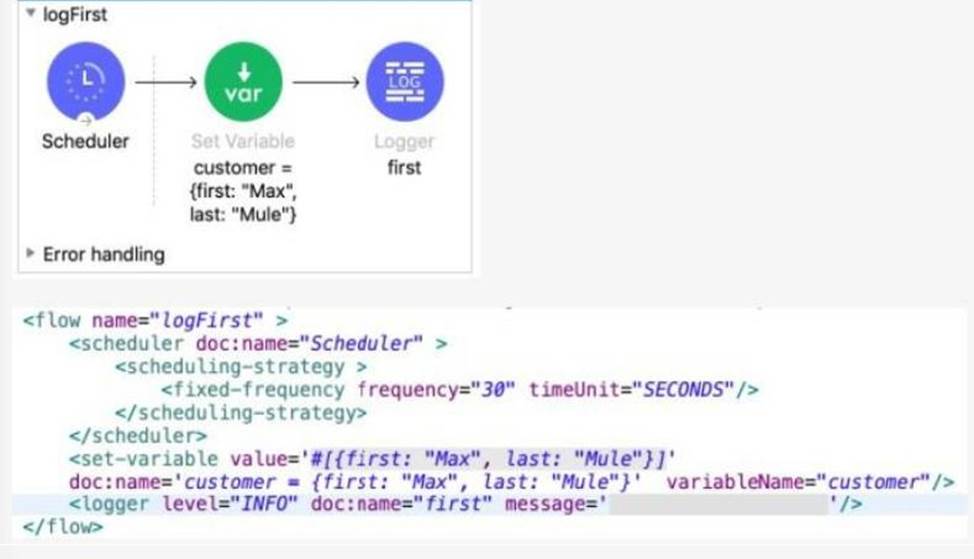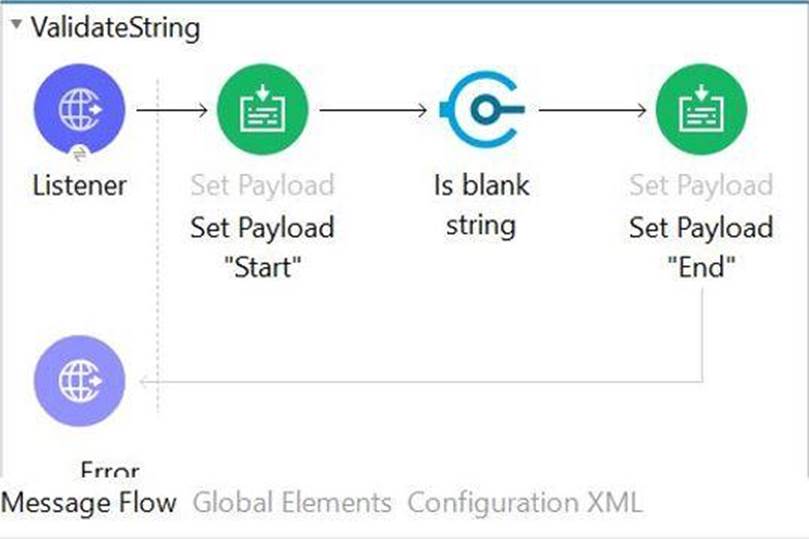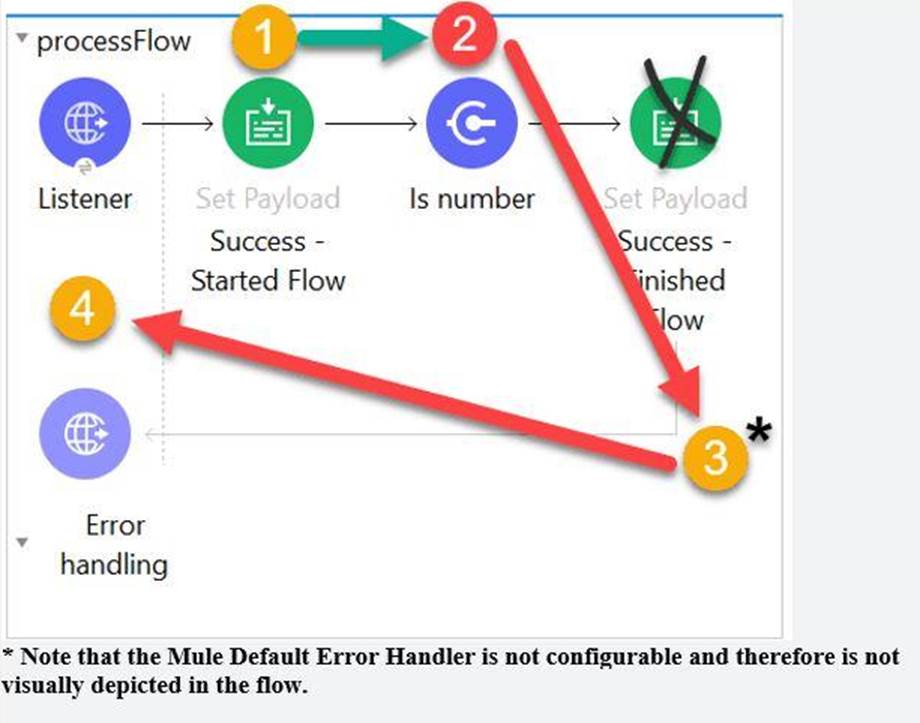Mulesoft MuleSoft Certified Developer-Level 1 MuleSoft Certified Developer-Level 1 (Mule 4) Online Training
Mulesoft MuleSoft Certified Developer-Level 1 Online Training
The questions for MuleSoft Certified Developer-Level 1 were last updated at Feb 28,2025.
- Exam Code: MuleSoft Certified Developer-Level 1
- Exam Name: MuleSoft Certified Developer-Level 1 (Mule 4)
- Certification Provider: Mulesoft
- Latest update: Feb 28,2025
}
Explanation:
For such questions always look for Syntax:
I call it "Wrap the Map"
trains:
{(
When mapping array elements (JSON or JAVA) to XML, wrap the map operations in {(..)} -{ } are defining the object
-( ) are transforming each element in the array as a key/value pair
What is the minimum Cloudhub worker size that can be specified while deploying mule application?
- A . 0.2 vCores
- B . 0.5 vCores
- C . 1.0 vCores
- D . 0.1 vCores
D
Explanation:
Correct answer is 0.1 vCores
MuleSoft Doc
Ref: https://docs.mulesoft.com/runtime-manager/cloudhub-architecture#cloudhub-workers
CloudHub Workers
Workers are dedicated instances of Mule runtime engine that run your integration applications on CloudHub. The memory capacity and processing power of a worker depends on how you configure it at the application level.
Worker sizes have different compute, memory, and storage capacities. You can scale workers vertically by selecting one of the available worker sizes:

Table
Description automatically generated
Which one of them is NOT a flow in Mule?
- A . sync flow
- B . subflow
- C . async sub flow
- D . async flow
C
Explanation:
Correct answer is async sub flow. Rest are valid flows in Mule.
Sub flow is always synchronous.
Refer to the exhibits.

The Set Variable transformer is set with value #[ [ first "Max" last "Mule"} ].
What is a valid DataWeave expression to set as the message attribute of the Logger to access the value "Max" from the Mule event?
- A . vars "customer first"
- B . "customer first"
- C . customer first
- D . vars "customer" "first"
An On Table Row Database listener retrieves data from a table that contains record_id, an increasing numerical column.
How should the listener be configured so it retrieves new rows at most one time?
- A . Set the target to store the last retrieved record_id value
- B . Set the ObjectStore to store the last retrieved record_id value
- C . Set the target to the record_id column
- D . Set the watermark column to the record id column
Refer to the exhibits.


A web client submits the request to the HTTP Listener.
What response message would be returned to web client?
- A . End
- B . String is not blank
- C . No response would be sent back to client and request will get errored out in Mule
- D . Start
B
Explanation:
Correct answer is String is not blank.
————————————————————————————————————————-
Here’s specifically what is happening here:
1) Payload is successfully set to “Start”
2) The Is Blank String validator creates an Error Object because the payload is string "Start". Execution stops
#[error.description] = “String is not blank”
3) Because no error handler is defined, the Mule default error handler handles the error. Remember, at its heart, the Mule Default Error handler is an error handling scope with just an on error propagate
4) “String is not blank” is the error message returned to the requestor in the body of the HTTP requestHTTP Status Code: 500
Reference Diagram:

A picture containing diagram
Description automatically generated
A Batch Job scope has five batch steps. An event processor throws an error in the second batch step because the input data is incomplete.
What is the default behavior of the batch job after the error is thrown?
- A . All processing of the batch job stops.
- B . Event processing continues to the next batch step.
- C . Error is ignored
- D . Batch is retried
A
Explanation:
In case of an error, batch job completes in flight steps and stops further processing.
MuleSoft Doc
Ref: Handling Errors During Batch Job | MuleSoft Documentation
The default is all processing will stop but we can change it by Max Failed Record field.
General -> Max Failed Records: Mule has three options for handling a record-level error:
Finish processing, Continue processing and Continue processing until the batch job
accumulates a maximum number of failed records. This behavior can be controlled by Max Failed Records.
The default value is Zero which corresponds to Finish processing.
The value -1, corresponds to Continue processing.
The value +ve integer, corresponds to Continue processing until the batch job accumulates a maximum number of failed records
What module and operation will throw an error if a Mule events payload is not number ?
- A . Filter modules Is Number operation
- B . Validation modules Is Number operation
- C . Validation modules Is not Number operation
- D . None of these
B
Explanation:
Correct answer is Validation modules Is Number operation.
Mule 4 does not use filters anymore. The functionality provided by filters in Mule 3 can be achieved by using the Validation Module.
According to MuleSoft. what is the first step to create a Modern API?
- A . Gather a list of requirements to secure the API
- B . Create an API specification and get feedback from stakeholders
- C . Performance tune and optimize the backend systems and network
- D . Create a prototype of the API implementation
B
Explanation:
First step in creating Modern API is to create an API specification and get feedback from stakeholders so that any future issues can be identified at early stage thereby reducing overall delivery time
Reference: https://developer.mulesoft.com/tutorials-and-howtos/quick-start/designing-your-first-api
Which keyword do you use to create a new function in DataWeave?
- A . function
- B . fun
- C . func
- D . map
B
Explanation:
You can define your own DataWeave functions using the fun declaration in the header of a DataWeave script. Sample is as below. —————————————- %dw 2.0
output application/json
fun toUpper(aString) = upper(aString)
—
toUpper("hello")
MuleSoft Doc
Ref: https://docs.mulesoft.com/mule-runtime/4.1/dataweave-functions
Latest MuleSoft Certified Developer-Level 1 Dumps Valid Version with 99 Q&As
Latest And Valid Q&A | Instant Download | Once Fail, Full Refund

